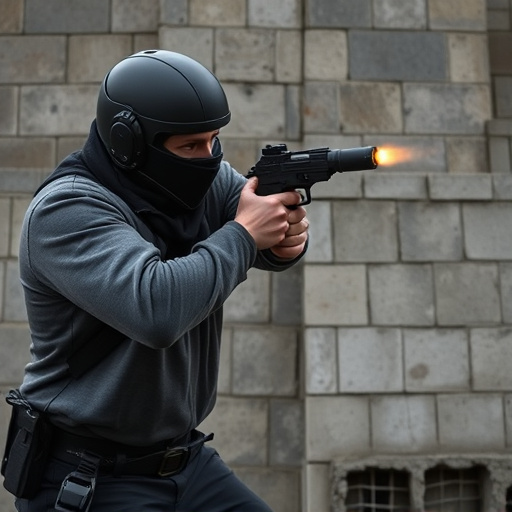Mini stun gun keychains offer a compact and discreet self-defense solution for everyday carry. These devices deliver powerful electric shocks, temporarily incapacitating assailants without causing permanent harm. While similar to Tasers in functionality, they differ in form factor, voltage output, and range. The legality of mini stun guns varies globally; users should research local regulations to avoid legal repercussions and ensure safety. For easy accessibility and compactness, these keychains are ideal for daily activities.
“In the realm of personal defense, Tasers and stun guns stand out as powerful tools. Understanding their nuances is crucial for informed choices. This article delves into the world of these non-lethal weapons, exploring their differences from application to legal standing. We dissect how Tasers work, uncover the features of stun guns, and analyze a compact solution: the mini stun gun keychain ideal for everyday carry. By comparing power, range, and safety, we guide you in selecting the best self-defense tool tailored to your needs.”
- Understanding Tasers: How They Work and Their Applications
- Unveiling Stun Guns: Features and Mechanism
- Mini Stun Gun Keychain: A Compact Solution for Everyday Carry
- Comparative Analysis: Power, Range, and Safety
- Legal Considerations: Possession and Use of Tasers vs Stun Guns
- Choosing the Right Self-Defense Tool: Taser vs Stun Gun
Understanding Tasers: How They Work and Their Applications
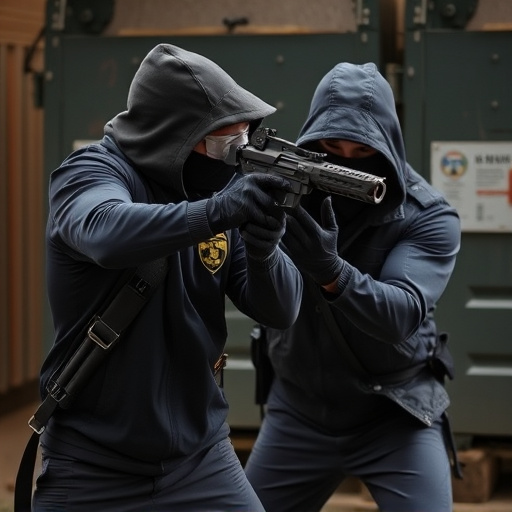
Tasers, officially known as Conducted Electric Weapons (CEWs), are devices designed to temporarily incapacitate a target through electrical impulses. They work by delivering a strong electric current through two probes attached to the device, disrupting the target’s neuromuscular system and causing muscle contractions. This results in temporary paralysis, allowing the user and nearby individuals to move away safely. Tasers have become popular among law enforcement agencies due to their non-lethal nature, which can be a game-changer in de-escalation scenarios.
While often associated with police use, Tasers also come in smaller, more portable forms like mini stun guns that can fit on a keychain for everyday carry. These compact devices are designed for personal protection, offering individuals a sense of security against potential threats. Unlike traditional stun guns, which typically require a larger amount of force to deploy, mini stun gun keychains provide an easy-to-access and discreet means of self-defense, making them a popular choice for those seeking an extra layer of safety while on the go.
Unveiling Stun Guns: Features and Mechanism
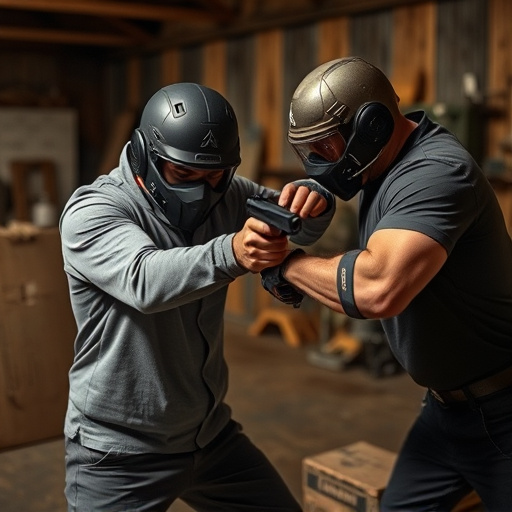
Stun guns, also known as electronic control devices (ECDs), are non-lethal weapons designed to incapacitate a target with an electric current. Unlike tasers—which fire probes to deliver a high-voltage stun—stun guns use a direct electrical discharge to disrupt muscle control and cause temporary paralysis. These handheld devices often resemble flashlights or keychains, making them attractive for everyday carry. Known as mini stun guns keychain, these compact versions pack a surprising punch, delivering a powerful jolt that can subdue an assailant without causing permanent harm. Their small size allows for easy concealment, offering peace of mind in potentially dangerous situations.
Mini Stun Gun Keychain: A Compact Solution for Everyday Carry
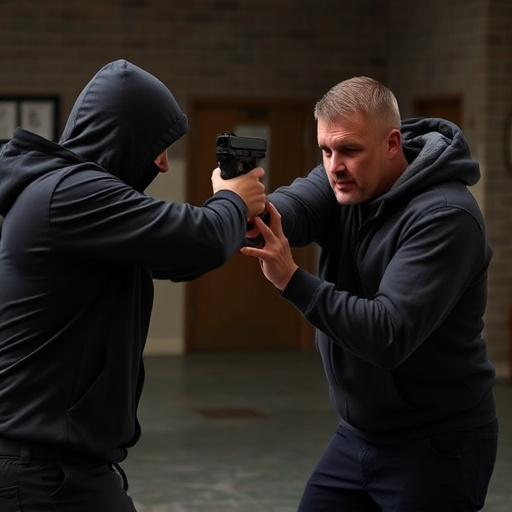
The mini stun gun keychain offers a compact and discreet solution for those seeking personal protection as part of their everyday carry gear. Its small size allows it to fit easily on a keychain, making it accessible yet unnoticeable. This design is perfect for individuals who want to be prepared for unexpected situations without sacrificing portability.
Unlike traditional stun guns, the mini stun gun keychain delivers a powerful electric shock with just a simple click or twist of the device. The low-profile form factor ensures it can fit in pockets or attach to bags, providing peace of mind and an extra layer of security while running errands, commuting, or traveling. Its compact nature does not compromise on performance, making it a reliable option for personal safety on the go.
Comparative Analysis: Power, Range, and Safety

In the realm of personal defense tools, Tasers and stun guns are often confused as serving similar purposes, but there are distinct differences that set them apart. A comparative analysis reveals that while both devices deliver an electric shock to incapacitate a target, they do so with unique characteristics.
Power and effectiveness vary between these two weapons. Stun guns typically produce a higher voltage output, making them more powerful and suitable for longer ranges. In contrast, Tasers are known for their ability to fire small probes that deliver a concentrated jolt, often considered more effective at close range. For everyday carry, a mini stun gun keychain offers convenience without sacrificing power, ensuring individuals have a readily available means of self-defense in various situations. Safety is another critical aspect; Tasers often come with safety features like probe retention and automatic shut-off mechanisms, while stun guns may require more manual control, adding an extra layer of responsibility for users.
Legal Considerations: Possession and Use of Tasers vs Stun Guns
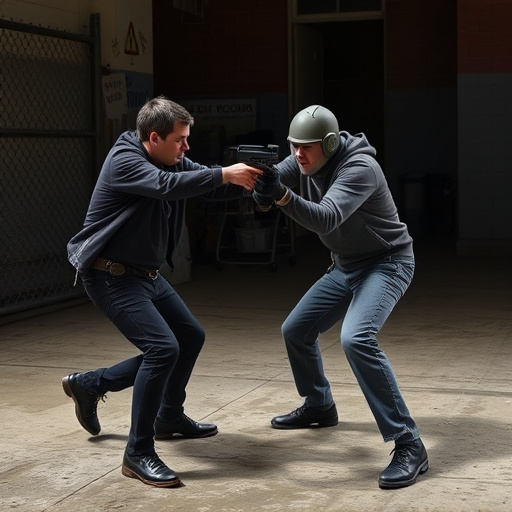
The legal landscape surrounding tasers and stun guns varies significantly across jurisdictions, reflecting differing societal attitudes and security concerns. Both weapons are designed to incapacitate targets through electrical impulses, but their possession and use come with distinct restrictions. While some regions permit the open carry of mini stun guns keychain for everyday carry, tasers often require a more stringent legal framework due to their potency and potential for misuse.
It’s crucial for individuals considering carrying either device to thoroughly research local laws, as penalties for unauthorized possession can be severe. Stun guns may face less restrictive regulations compared to tasers, which are sometimes classified as firearms or less-lethal weapons, necessitating permits, training, and specific storage requirements. Understanding these legal nuances is paramount to ensuring compliance and personal safety in the event of unexpected encounters.
Choosing the Right Self-Defense Tool: Taser vs Stun Gun

When considering self-defense options, individuals often grapple with choosing between a Taser and a stun gun, both powerful tools designed to incapacitate an assailant. The primary difference lies in their mechanism of action; Tasers use electrical current to disrupt muscle control, while stun guns deliver a high-voltage pulse, causing temporary paralysis. For everyday carry, a mini stun gun keychain offers a compact and readily available option. Its small size allows for easy accessibility, making it ideal for those who prioritize personal safety on the go.
For situations demanding a slightly longer range or additional features, Tasers might be preferred. They often come with more power settings and can provide a greater impact. However, stun guns are generally less complex in design, making them user-friendly choices for individuals seeking simplicity and reliability in a self-defense tool, such as a mini stun gun keychain tailored for everyday carry.
When choosing between a Taser and a stun gun, understanding their unique differences is key. Tasers, with their electric pulse technology, offer a non-lethal force option proven effective in law enforcement. Stun guns, on the other hand, rely on high voltage to temporarily disable, with varying power levels available. For everyday carry, the mini stun gun keychain stands out as a compact, discreet solution without compromising effectiveness. When considering legalities, it’s crucial to check local regulations, as possession and use vary. Ultimately, selecting the right self-defense tool depends on individual needs, with both Tasers and stun guns offering valuable protection in different scenarios.
